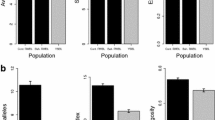Abstract
Guanay cormorants Phalacrocorax bougainvilli aredistributed mostly on the Pacific coast of Peru and northern Chile. A smallpopulation of around 50 pairs was described on the Patagonian Atlantic coast inthe late 1960s. Further records have revealed a progressive decrease of thispopulation. During 1999 we looked for guanay cormorants at those Atlanticcolonies where the species was recorded in the past. Only four individuals weredetected in one colony (Punta Lobería), and all of them were mated withking cormorants P. albiventer. In addition, we recordedhybrids between guanay and king cormorants mated with pure king and imperialcormorants P. atriceps. Causes of the population declineare unknown. Since guanay cormorants inhabiting the Atlantic coast could be agenetically differentiated population, we emphasize the need for molecularstudies. If genetic polymorphism is detected, the capture of remnant individualsin order to constitute a genetic stock should be considered.
Similar content being viewed by others
References
Devillers P. and Terschuren J.A. 1978. Relationships between the blue-eyed shags of South America. Le Gerfaut 68: 53–86.
Duffy D.C. 1983. The foraging ecology of Peruvian seabirds. Auk 100: 800–810.
Durnford H. 1878. Notes on the birds of Central Patagonia. Auk 2: 389–406.
Erize F. 1972. The guanay cormorant Phalacrocorax bougainvillii nesting on the Atlantic coast of South America. Bulletin of the British Ornithologists Club 92: 117–118.
Frankham R. 1995. Inbreeding and extinction: a threshold effect. Conservation Biology 9: 792–799.
Frankham R. 1996. Relationship of genetic variation to population size in wildlife. Conservation Biology 10: 1500–1508.
Grant P.R. and Grant B.R. 1992. Hybridisation of bird species. Science 256: 193–197.
Grant P.R. and Grant B.R. 1997. Hybridisation, sexual imprinting, and mate choice. American Naturalist 149: 1–28.
Hanski I. 1999. Metapopulation Ecology. Oxford University Press, New York.
Johnsgard P.A. 1993. Cormorants, Darters, and Pelicans of the World. Smithsonian Institution Press, Washington, DC.
Malacalza V.E. 1984. Aves guaneras. Relevamiento de especies en tres cormoraneras continentales de la Provincia de Chubut (Argentina) (Pelecaniformes – Phalacrocoracidae). Centro Nacional Patagónico. Contribución 84: 1–13.
Malacalza V.E. 1991. External characters in the offspring resulting from cross-breeding between cormorant species. Colonial Waterbirds 14: 180–183.
Malacalza V.E. and Bertellotti M. 2001. Cambios poblacionales de los cormoranes (Phalacrocorax) en Punta Lobería, Patagonia Argentina. Ornitología Neotropical 11: 83–86.
Mayr E. 1963. Animal Species and Evolution. Belknap Press of Harvard University Press, Cambridge, Massachusetts.
Moritz C. 1994. Defining evolutionary significant units for conservation. Trends in Ecology and Evolution 9: 373–375.
Navas J.R. 1970. Nuevos registros de aves para la Patagonia. Neótropica 16: 12–17.
Nuechterlein G. and Buitron D. 1998. Interspecific mate choice by late-courting male western grebes. Behavioral Ecology 9: 313–321.
Olrog C.C. 1959. Las aves Argentinas. Instituto Miguel Lillo, Tucumán, Argentina.
Orta J. 1992. Family Phalacrocoracidae (cormorants). In: del Hoyo J., Elliott A. and Sargatal J. (eds), Handbook of the Birds of the World,Vol. 1: Ostrich to Ducks. Lynx Edicions, Barcelona, Spain, pp. 326–353.
Punta G. 1996. Estado de la situación del recurso guanero en la República Argentina. Informes Técnicos del Plan de Manejo Integrado de la Zona Costera Patagónicas. Fundación Patagonia Natural, Puerto Madryn, Argentina, no. 6: pp. 1–57.
Sangster G. 2000. Taxonomic stability and avian extinctions. Conservation Biology 14: 579–581.
Yorio P., Frere E., Gandini P. and Conway W. 1999. Status and conservation of seabirds breeding in Argentina. Bird Conservation International 9: 299–314.
Yorio P., Frere E., Gandini P. and Harris G. (eds) 1998. Atlas de la distribución reproductiva de aves marinas en el litoral patagónico argentino. Fundación Patagonia Natural, Puerto Madryn, Argentina.
Rights and permissions
About this article
Cite this article
Bertellotti, M., Donázar, J.A., Blanco, G. et al. Imminent extinction of the guanay cormorant on the Atlantic South American coast: a conservation concern?. Biodiversity and Conservation 12, 743–747 (2003). https://doi.org/10.1023/A:1022477029586
Issue Date:
DOI: https://doi.org/10.1023/A:1022477029586




